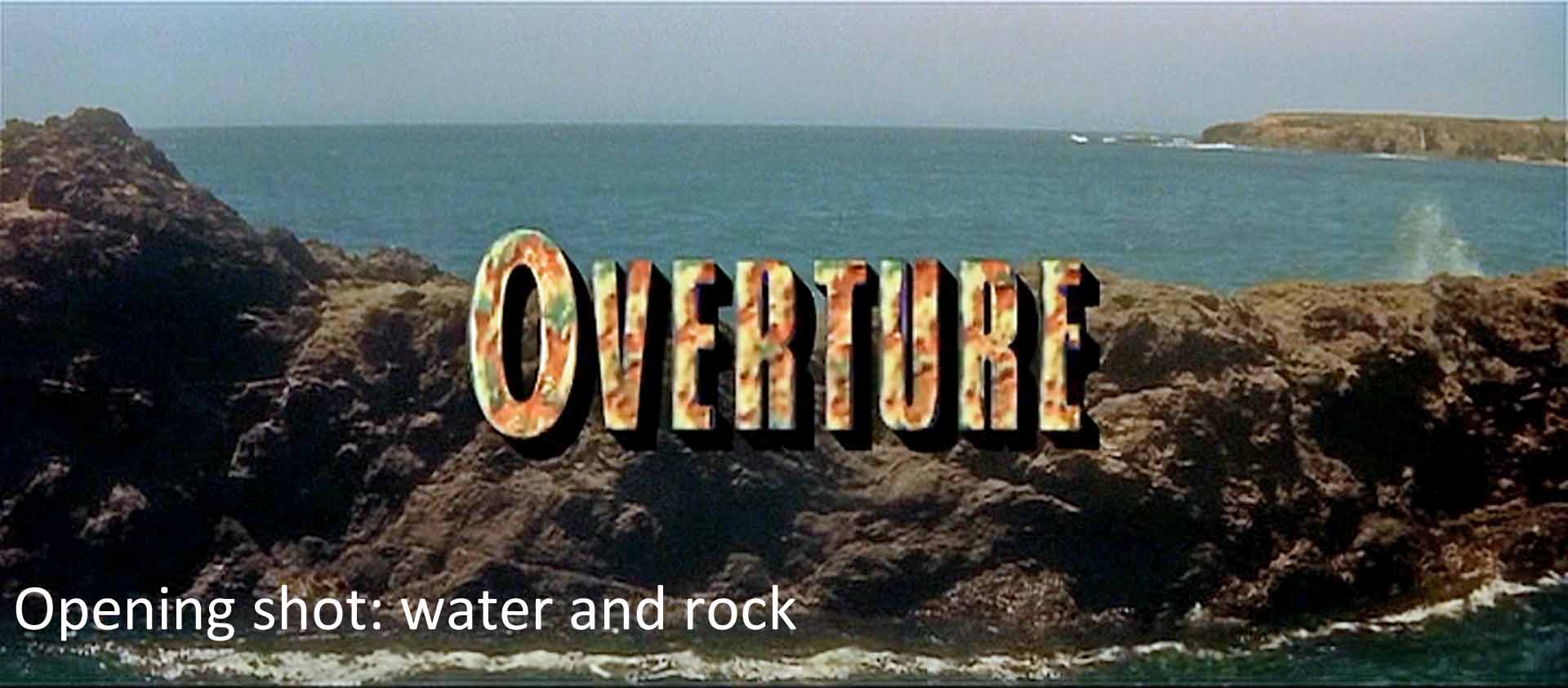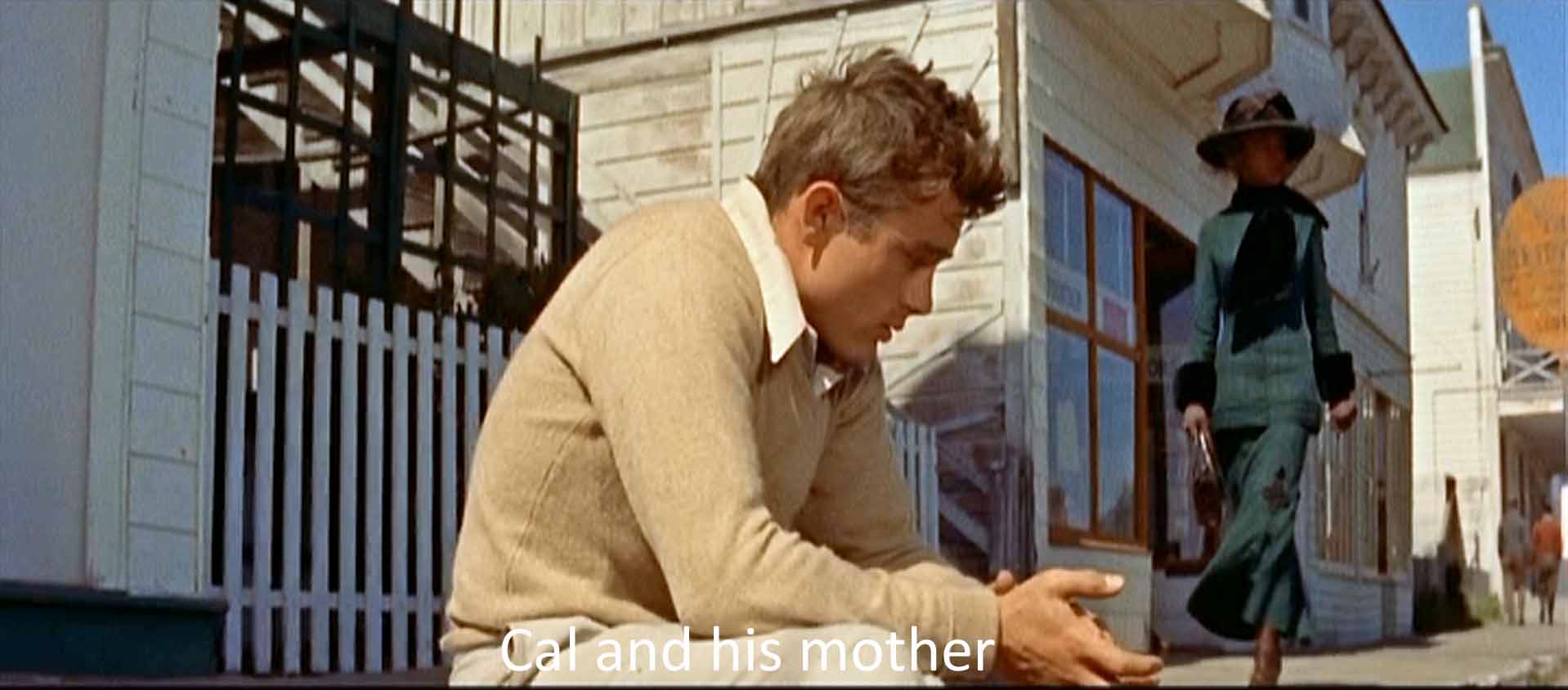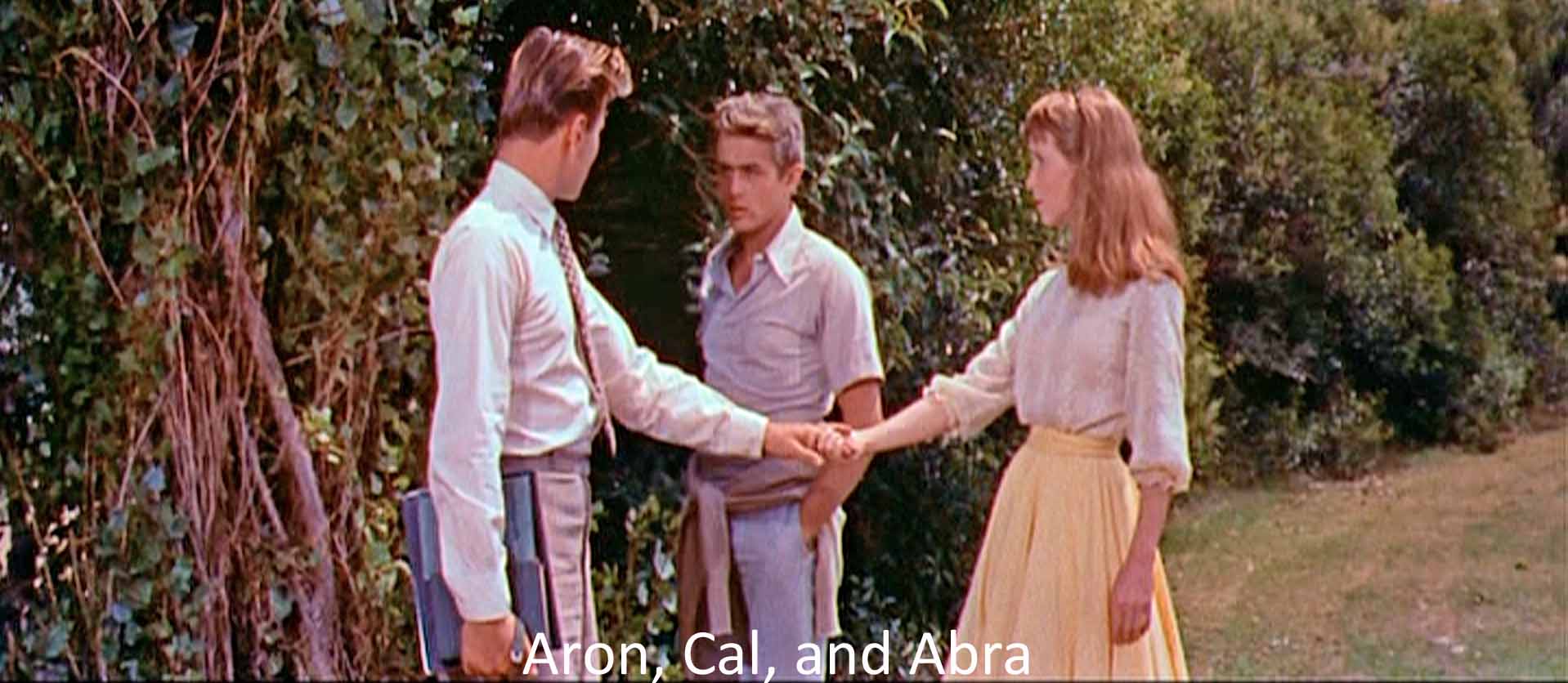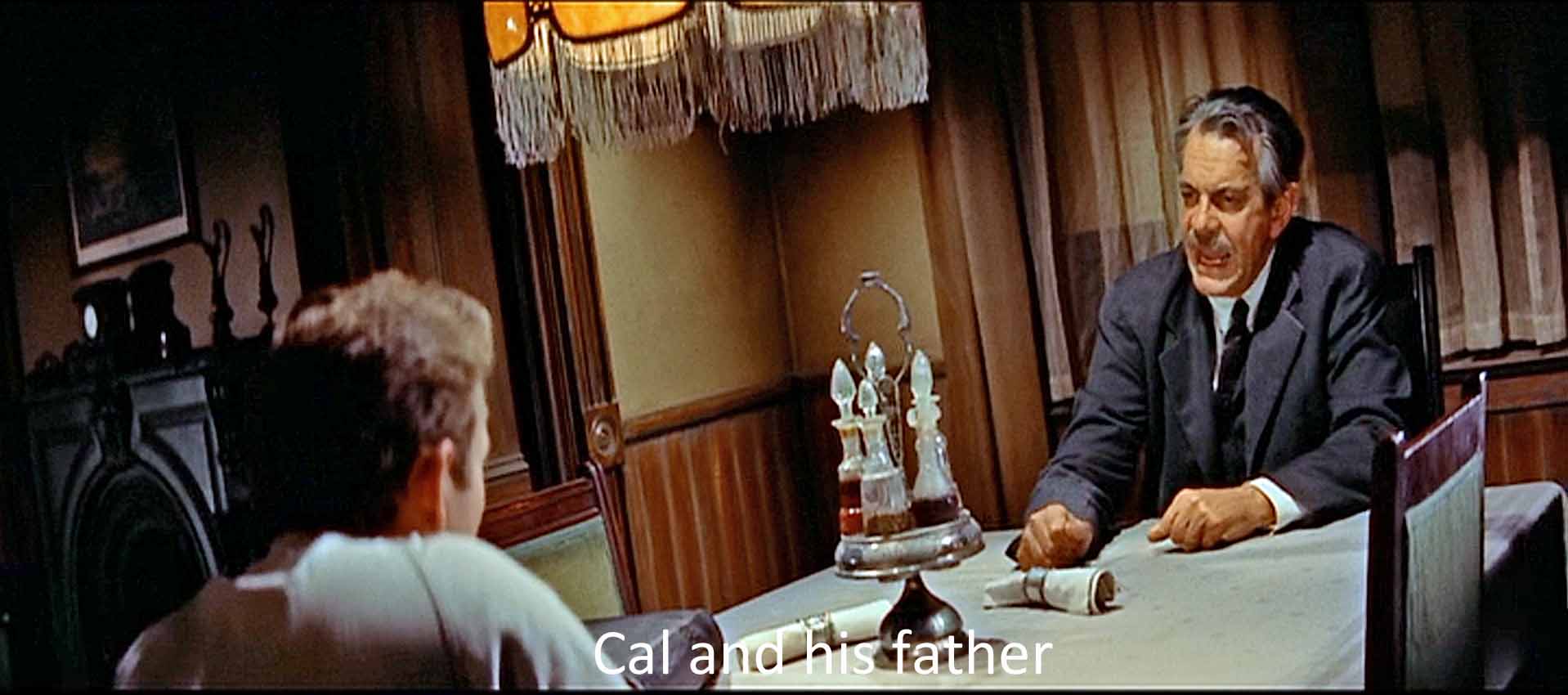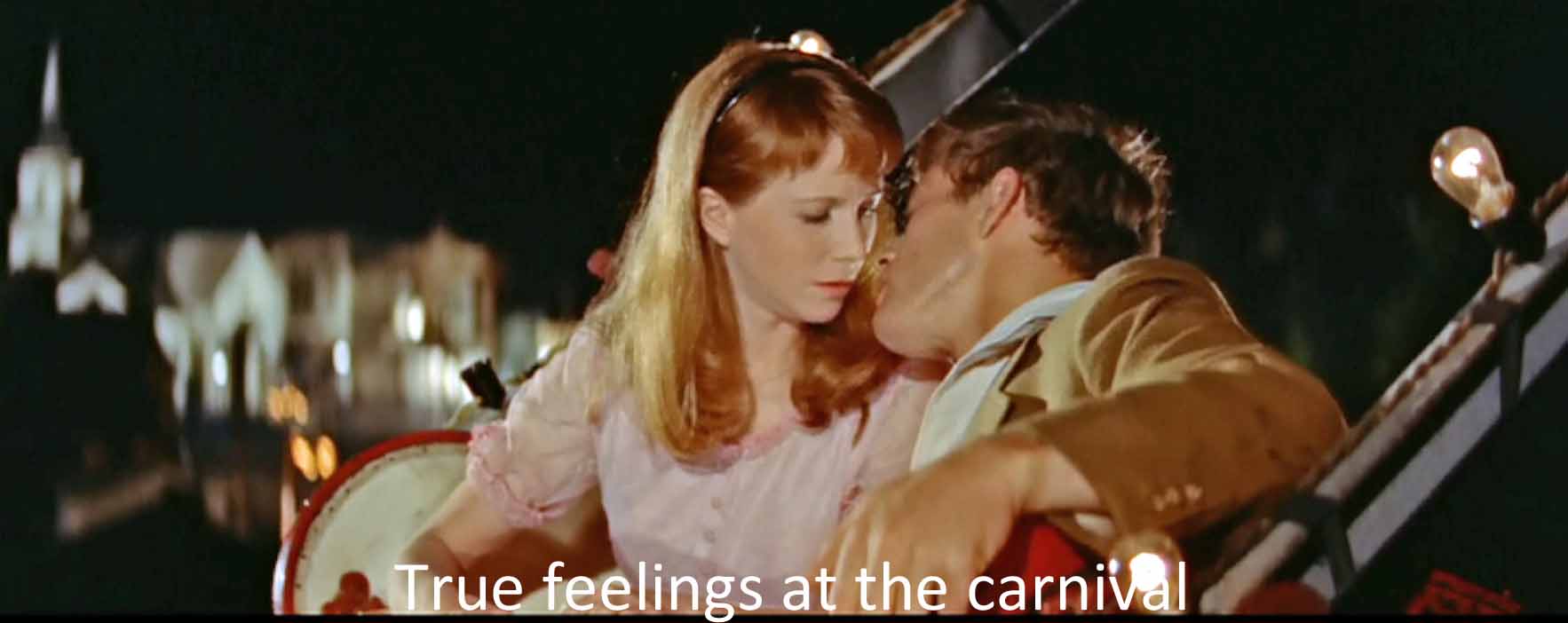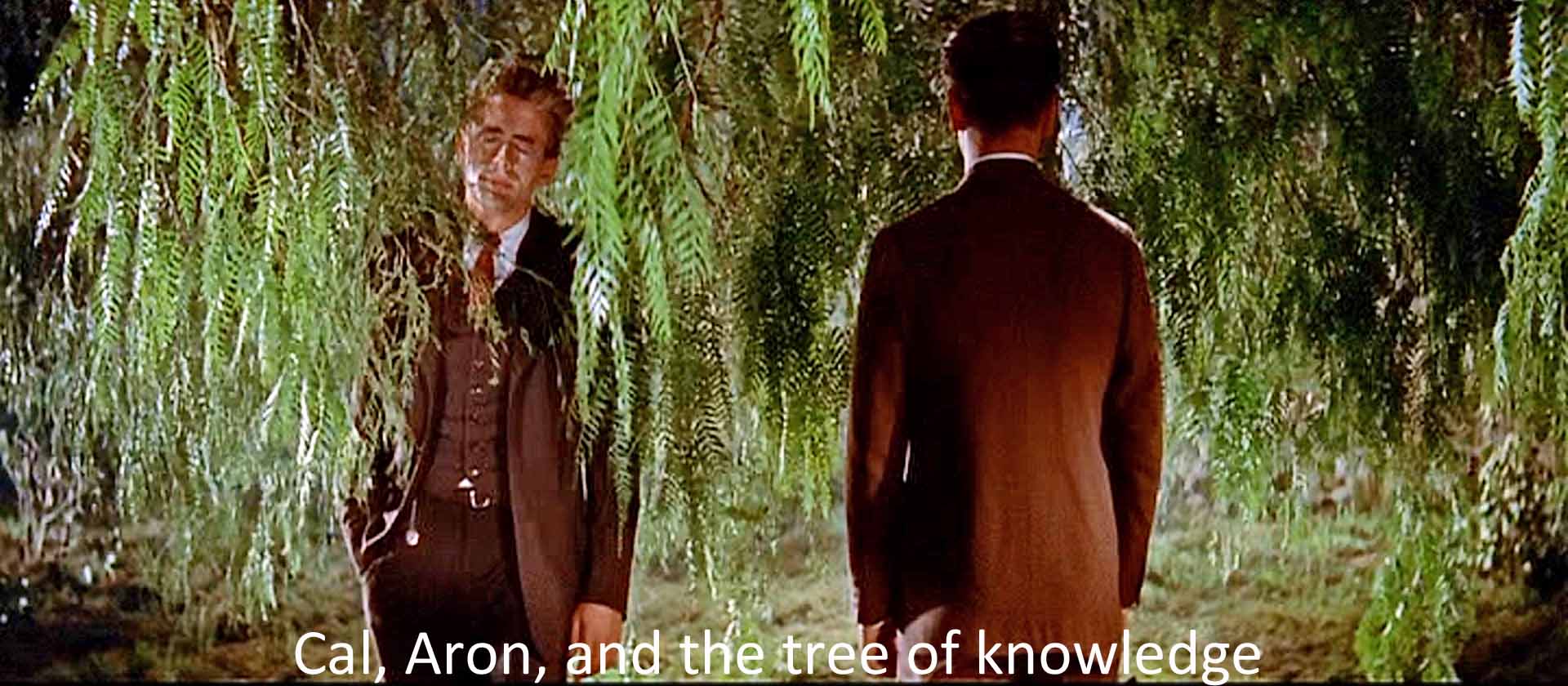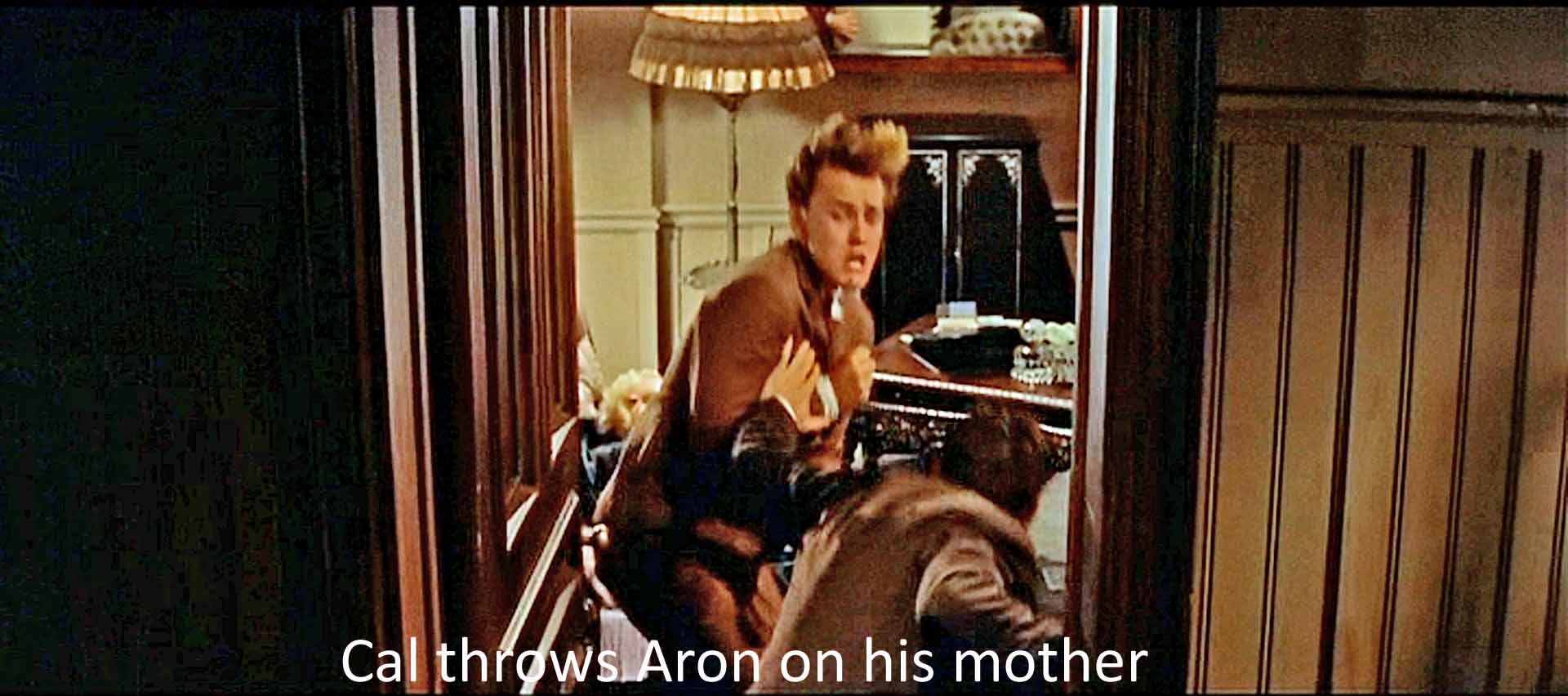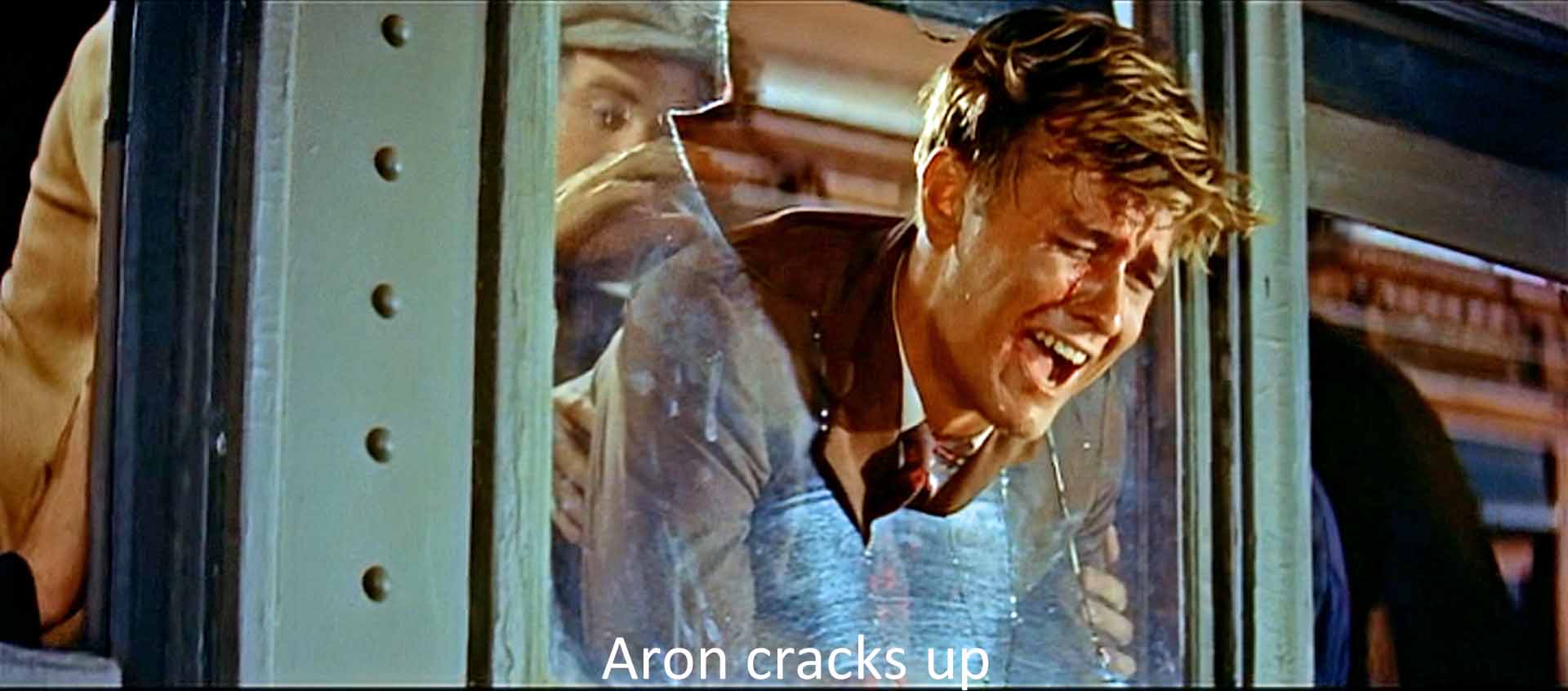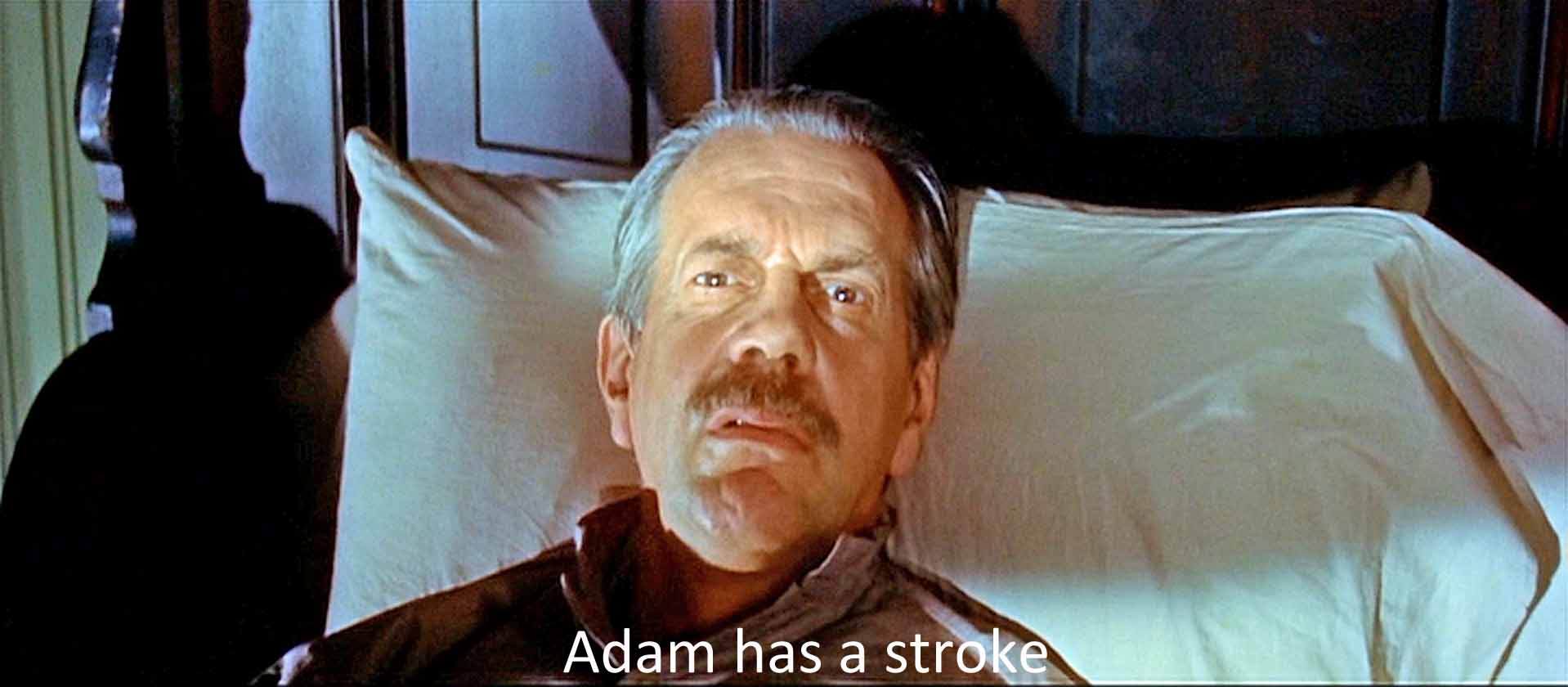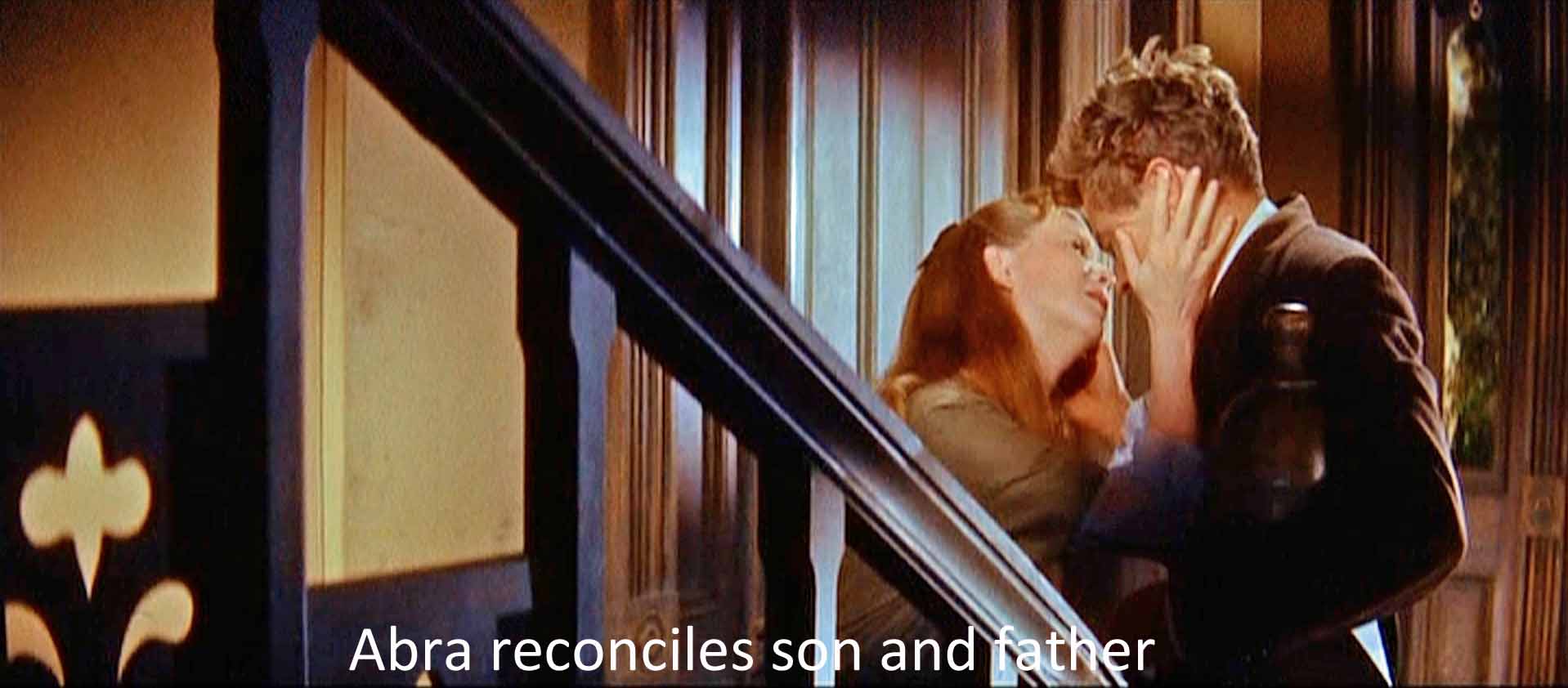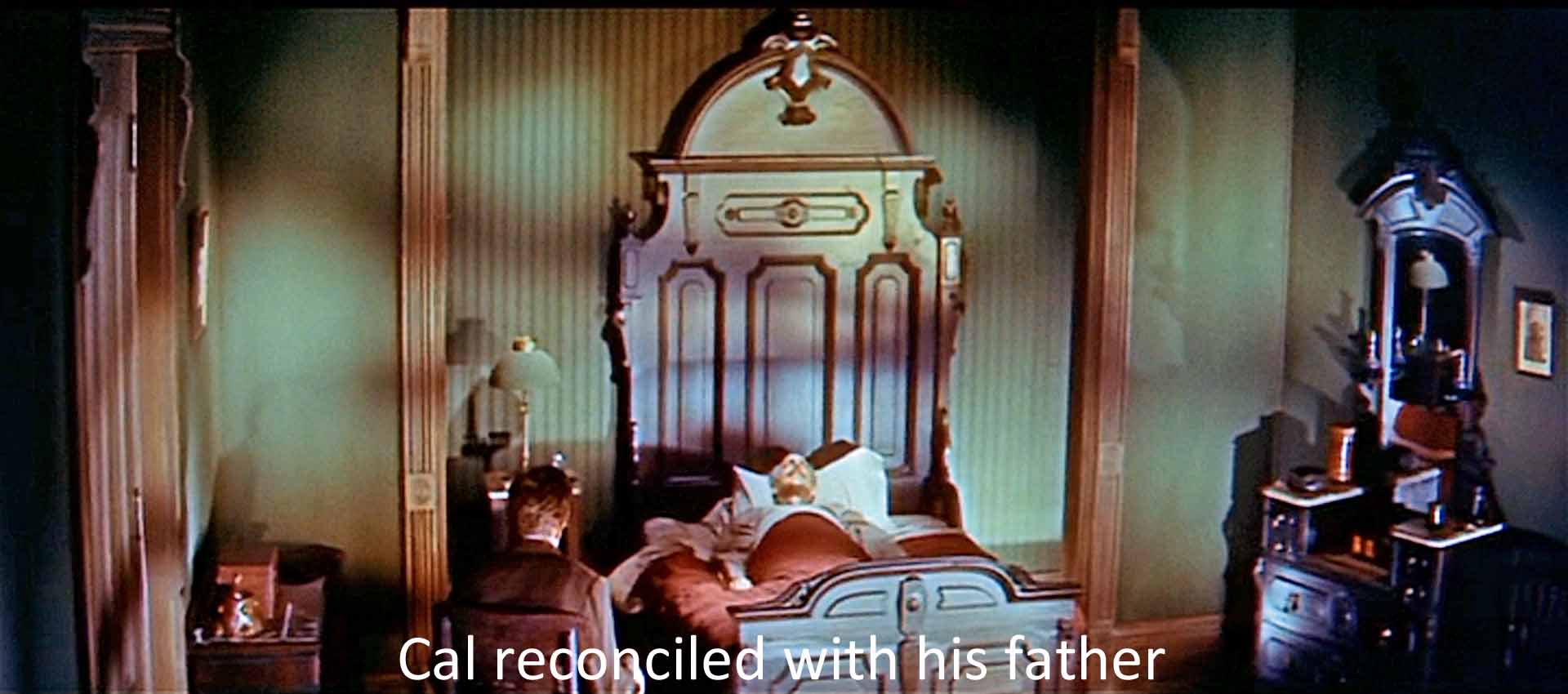At first viewing, this film felt very dated, a real 1950s movie. It’s preoccupied with themes I remember from that decade: juvenile delinquents and pop psychology (or psychoanalysis).
Yes, people worried about juvenile delinquency. (Was there more than in other decades? I don’t know.) In 1955, teen-aged American boys would have missed a father (away to World War II) during their formative years. And the advertising industry had discovered how profitable it could be to market to a separated world of teen-age culture. The movie industry responded with movies like The Wild One (Benedek, 1953) with Marlon Brando as the leader of a motorcycle gang that takes over a town. Asked “What are you rebelling against?,” he answers “Whaddaya got?”
To intellectuals and would-be intellectuals, it was the decade when the Beats exploded literary decorum with radically new styles of poetry and prose that celebrated rebellion and violence, drugs, homosexuality, and other things long taboo (especially in movies). Alan Ginsberg's super-Whitmanesque Howl roared into 1956. Jack Kerouac wrote On the Road in 1951, although he couldn’t get it published until 1957. William Burroughs' Naked Lunch burst on the scene in 1959 (I testified in its obscenity trial). What would Adam Trask say to any of them?
Played by naturally stiff Raymond Massey, Adam is the Bible-thumping, sin-obsessed father who dominates this motherless family. He has one son, Aron (Richard Davalos), whom he loudly proclaims his “good” son. Kazan based this film on the last third of Steinbeck’s multi-generational novel, and in the novel, Aron dropped an a from the biblical Aaron, and the filmed Aron does the same. (“Aron” is a fairly common Southernism, as in Elvis’s middle name.)
Aron has a “bad” twin (even more loudly proclaimed as such), Caleb or Cal. He, of course, is James Dean in his first major film role. He had previously done Broadway, tv, and small parts in film. Kazan’s discovery propelled him into stardom, high living, and early death. Dean erupted onto the ‘50s scene with his own flagrant defiance, a rebel for a rebelling generation. Throughout the film he signals his alienation by being inarticulate or by turning away from the people talking to him.
His father tells him, “You're bad! Through and through, bad." In reality proper Raymond Massey hated Dean who played the annoying rebel off as well as on camera. But no wonder the rebel Dean hit it off famously with the young (and the would-be young) of the time. Boys who had grown up without fathers must have found in Dean their own neediness, neglect, and resentment of parental plans belatedly imposed. And girls could admit to a sexual attraction to the latest and very handsome teen idol. Dean flashed briefly, but immortally, across the Hollywood firmament and died in a car crash shortly after this film was released.
Set in 1917 rural America, the film has no other vocabulary to describe these twin sons than “good” and “bad.” The characters pass a lot of moral judgments in this film. “Good” in a moral sense (not “good morning”) occurs twenty-one times, and “bad” (also in a moral sense) fifteen times. “You’re no good,” Aron shouts at Cal. “You're mean and vicious and wild.” “Sometimes I think I'm really bad,” says Aron’s girl Abra (Julie Harris), as she ever so tentatively acknowledges her sexual desire for Cal. “Aron is everything that's good, Mother,” shouts Cal as he thrusts his brother on his mother’s lap.
Kate Trask (Jo Van Fleet) long ago ran away from her controlling husband and set up a highly profitable bordello. Dressed in black when she goes outside, she is dead to the “good” father and son who do not know her fate. And here's how Cal, thinking of his mother, explains himself and his twin: "Aron's the good one. I guess there's just a certain amount of good and bad you get from your parents, and I just got the bad." Kazan called East of Eden an “anti-puritan” film—and he was dead right.
“A man has a choice,” counters Adam, announcing his guiding principle. “That's where he's different from an animal.” Adam states it to refute Cal’s claim that he got his “badness” from his genes. And Cal rejects heredity and adopts his father’s view in the last scene. It’s pure existentialism—from Sartre, if I remember right. Another 50s fad. For animals essence precedes existence; for humans existence precedes essence. We are what we choose to do and be.
Although the film works with a two-valued, good-bad psychology, the 1950s were also the heyday of pop psychoanalysis. Why is Cal mean and vicious and wild? (Why in a more technical sense does he have a weak superego?) Abra spells out the psychology of it: “It’s awful not to be loved. It’s the worst thing in the world. It makes you mean and violent and cruel.” He was neglected by his father! And how do we cure Cal’s badness? By love! In pop psychoanalysis, the Beatles got it right: all you need is love.
The doctor speaks harshly to Cal, and rightly so. Cal has killed his father and (in the novel, anyway) his brother. (Aron dies in the war.) But Cal gets everything. By saying “I’m sorry,“ he gets it all: revenge on his resented brother, revenge on his icy father, love from his father, and love from Abra. The selfishness of the nurse reminds us that that’s the way of the world. Bad guys sometimes win, maybe more often than not.
As for the other brother, he is not, as psychoanalysts say, reality oriented. He doesn’t really understand Abra or what his father is doing to Cal. He doesn’t know his mother’s real fate. When Cal forces the knowledge on Aron, he cracks up, gets drunk, and, despite being a conscientious objector, rushes off to war. This gives the father a stroke and Cal the chance (prompted by Abra) to show his love for his father and the father to acknowledge Cal as the truly loving son. The unloved “bad” son is redeemed (and that perhaps extends to Kazan, despised after he “named names” to the House Un-American Activities Committee). Love cures all.
Finally, the film has a simplistic, not to say crude biblical parallel that has put off both critics and normal people. Adam stands for, guess who!, the father of us all. He has two sons, one good, Abel-Aron, and one bad, Cain-Cal. “Abel was a keeper of sheep [submissive Abra?], but Cain was a tiller of the ground.” Cal grows beans to profit and make money to repair his father’s financial loss. Aron/Abel brings an offering to Adam/God, his engagement to Abra. “And the Lord had respect unto Abel and to his offering.” Cal brings money (“the fruit of the ground”) to make his father financially whole. “But unto Cain and to his offering he had not respect.” Adam harshly rejects Cal’s money as war profits. After Adam’s stroke, the wise sheriff cites Genesis to suggest that Cal leave town: “Cain rose up against his brother Abel, and slew him.” "And Cain went away and dwelt in the land of Nod, on the east of Eden." We get the film's title at this crucial moment: will the film end in unresolved hatred or in love? Abra reconciles son and father, and we get the love prescribed by pop psychoanalysis.
Steinbeck must have thought the biblical parallel (Genesis iv:1-16) would give his multi-generational novel epic status. Some are put off by it. I’m not. I think it casts a curious light on the story and the characters, suggesting a compulsive same-old, same-old in our human experiences.
Be that as it may, many reviewers and critics and regular people have downgraded this film. I did too. Suspecting I was missing something, I did some research. I first found some discussions of the music.
The film begins with an “overture” that should have alerted me more to the music by Leonard Rosenman. He was a composer of note, who had studied with Arnold Schoenberg. (He was, I read, James Dean’s piano teacher.) He developed a highly expressive style for this picture. He used a kind of “American” theme in the manner of Aaron Copland or Roy Harris for the scenes expressing the values of Adam and Aron. But for the turmoil that comes from Cal, he developed a complex, expressionistic, chromatic, and atonal theme. Listen to the discords when Cal thrusts Aron onto his mother or when Aron is on the train to enlist. This kind of dissonance was quite unorthodox in 1955. Interestingly, in the finale, although Cal is front and center, the “Cal” theme does not occur, only the “American” theme, as Cal achieves love for and from his father.
I also found a highly intelligent article by Douglas L. Rathgeb on symbols in East of Eden. Rathgeb wrote a book on James Dean, and he does the audio commentary on some of his films. I’ve drawn on Rathgeb’s article extensively in my own essay, as you’ll see.
He argues that Kazan’s complex use of symbols makes him an auteur and incidentally rescues East of Eden from its crude biblical parallel and the simplicities of “good” and “bad.” I agree. This is a far subtler film than a first and only viewing will yield.
Rathgeb (and others) point to some complex camera work by Kazan and cinematographer Ted McCord. They use a tilted camera in the scene where Adam demands that Cal read the Bible: Adam up and Cal down. I think this “dutch angle” shows the uneven balance of power between father and son. In the scene with Cal on a swing confronting his father, Kazan tilts the camera back and forth echoing Cal’s movements and the chaos in the relationship. (By contrast the intercuts to Abra are level—as she is.) There are similar tilts in Cal’s strange relationship with his mother.
Kazan also uses blocking to achieve some exciting framing. For example, when Cal asks his mother for money, we see her looking into a big mirror. We see both her and Cal in the mirror—the doubleness of their relation (mother and source of money) like the doubleness of her bedroom-office. The departure of the lettuce train emphasizes the vast distances to be covered--or not, as it turns out.
Places matter in this film. It opens with a prologue contrasting prim Salinas with gamy Monterey. We have Adam’s ice house, cold, and the Trask house, dark, gloomy, with a feminine presence (the housekeeper) only in the shadows. And we have Kate Trask’s brothel, noisy, smoky, rowdy, sexual, earth-colored. The noisy, colorful carnival, Rathgeb suggests, stands for the real world, where Cal can succeed and Aron can only fail, where Abra’s true feelings will come out. Adam’s ranch, where he tried to confine and hold his wife, stands for his illusory values. The film climaxes in the railroad station where everything is in conflict (the war) and in transit (the train), with an atonal vocal on the soundtrack. After the stroke, Adam’s bed has a church-y quality. Rathgeb suggests that the green of the bedroom where Cal and Adam reconcile returns us to a natural world in which Cal will cope with his father’s death, and he and Abra will marry and create future life. And, of course, uniting a son with a father is one of the great themes of American films and television.
Method actors and directors like Kazan often linked characters to filmed objects, “personalizing” them. Here, Rathgeb singles out three elements that the director uses, earth and water and trees, associated with human life and emotional growth. I’ll add a fourth: food and drink. Different characters relate to these images in different ways.
In the opening prologue and “overture” we see water splashing against rocks, like Cal’s turbulent rebellion against his hard father. In the opening scene, as Cal follows Kate, we see watertowers in the distance, just as she is distant to him. Adam and Aron are linked to ice. When Cal peers through the ice at Aron and Abra necking in the ice house, the shot echoes his mother’s peering distantly at him through her window curtains. When Cal throws big blocks of ice down the chute, he is showing his rejection of the coldness of his brother and father. When he lights a cigarette at the top of the ice chute, symbolically he is trying to melt that ice and assert his manhood. In general smoking is associated with manhood and potency. Cal puts his bean-growing plan together with Will Hamilton (Albert Dekker) in a steamy shower room. Abra too is linked to water: she throws her father’s new wife’s ring into the river—and she can then forgive him. As for poor slave-y Anne (Lois Smith), water for her means work, scrubbing the floor or washing the glasses.
Earth plays a role in the film when Cal grows beans. (By contrast the earth is Adam’s enemy: a snow slide halts the train and ends his hopes for refrigerated lettuce.) As Cal’s beans begin to sprout, he dances exuberantly and embraces the earth (a delightful improvisation from Dean). His Italian workers are amused and tolerant—suggesting Cal’s easiness with those who are “different.” Earlier he had helped a black child cross the street. (Kazan often used black characters to comment on white behavior, like the black madam who laughs at Cal.) Too, Cal joins Aron in defending the German Mr. Albrecht from his super-patriotic persecutors. That leads to another instance of earth, the Albrechts’ trampled rose garden. The sheriff (Burl Ives) promises that it will be set right. (Throughout, the sheriff tries to establish balance and peace, and earth seems to be associated with those.) In an important earth scene, Adam’s workers are harvesting lettuce, and Abra comes, bringing Aron’s lunch. Instead she chats with Cal, confiding in him how she reconciled with her father after his remarriage. Cal takes from Aron’s lunch an egg (always symbolic of fertility). Abra notes and wonders about the Mexican girl hanging around him. “Girls follow you around, don't they?” She is growing closer to Cal.
Trees Kazan associates with the desire for knowledge and experience (as Eve ate the fruit of the Tree of the Knowledge of good and evil). Trees frame Cal as he tries to find out about his mother in the opening. Cal has knowledge—business sense—like his mother. He makes money with his beans, while his father loses money with his lettuce stored in ice. Like a tree, Cal can exploit the earth and water with his beans.
Cal skulks among trees while Aron and Abra walk past him to Adam’s newly-purchased ice house. Abra peeks at him, suggesting her unconscious attraction and Cal’s appeal to women. All the women in this film are attracted to Cal and obey him. Importantly, his mother lends him “bad” money so that he can help his “good” father.
Later, at the parade, Cal joins Aron and Abra under some trees. Abra is dressed in a nurse’s uniform: a realist, she accepts the war as Cal does. They are knowing. But Aron rejects it, as not “right,” and surely history has proved that Aron was right. He stays with the trees, as Cal lopes off. It’s the only time Aron is linked to trees.
Inside the house that Cal and Abra have decorated (playing house?) for Adam's birthday, Adam cruelly rejects the money Cal so laboriously earned to please him. In a crucial tree scene, Cal rushes out of the house and cries under a weeping willow. Abra, knowing how much he has been hurt, stands with him. Aron comes out, having stupidly announced his and Abra’s engagement without telling her beforehand—a “gift” to his father. Now, not under the tree of knowledge, his power over Abra now illusory, he foolishly orders Cal to stay away from Abra. Cal touches other trees as he counters by hinting about their mother to Aron. “Can you look at the truth, just once?” Knowledge is Cal’s strength and his weapon.
Knowledge is power; the driving lesson demonstrates that. Roy (Lonny Chapman) has been to “the automobile school in Chicago.” Roy can harness the power of the internal combustion engine. Compared to him, Adam seems a child. Earlier, Cal had harnessed the powerful knowledge of his mother he gained in a bar.
Cal takes Aron to his mother’s brothel and throws him onto her. Cal stands, superior, while Aron is lying on his “bad” mother. Back at the house, Cal tells his father who has asked where Aron is, “I am not my brother’s keeper.”
For Rathgeb, the thematic dualism in East of Eden “is not good vs. evil, but innocence and naïvety vs. experience, illusion vs. reality” (36), as in this recurring image of trees. Cal and his mother can succeed in business in the real world, while Adam and Aron are mired in illusions. In the love story, Cal rescues Abra from Aron’s simplicities, narrowness, and unreality.
What I think of as the transverse episodes (episodes that do not bear on the main plot, that seem stuck in) also reinforce this theme of knowledge. The Mexican girl who appears in a couple of scenes tells us that Cal's sexual knowledge exceeds either Aron’s or Abra’s. The driving lesson tells us of a world of technical know-how beyond Adam. The elaborate war parade speaks to the naïvety of the townspeople. The nurse in the finale is the most interesting. She asks for three things that echo key symbols. She asks for someone to wash things—water and dirt—earth. She asks for coffee—food and drink. And she asks for something to read—knowledge. But she is repellent, and all these symbols matter little compared to the overwhelming focus on love that replaces her self-centeredness.
Food and drink is another recurring image. The only proper meal we see is in Adam’s house: an almost bare table dominated by a Bible that the father makes Cal read. (And Cal defiantly botches the reading.) By contrast, Kate’s bordello has plenty of food and drink and noise, but it’s delivered by the pathetic Anne. Food and drink come at the expense of a woman or women. As Aron and Abra watch the parade, Cal gives her a stick of licorice; food is easy, playful. At the carnival, Cal characteristically snitches a bag of taffy at the carnival and gives it to Abra. She laughingly notes that it’s her first time to be involved in a theft (it has just been her first time to be picked up by a man). She sticks it back in Cal’s pocket, but he makes her keep it. Then there's the party food Cal provides. Food and drink are easy in the world of Cal—or his mother.
Rathgeb is justified in writing of the “undiscovered” East of Eden. In the bushels of articles that go on about James Dean, troubled youth in the ‘50s, or Kazan’s testimony before HUAC, few look at the film’s subtleties. After three or four viewings I could see its unusual camera work, hear its remarkable score, and read its by no means obvious use of symbols. When you become aware of those elements, you can see that East of Eden ranks as a work of art alongside Kazan’s more familiar triumphs, Streetcar and Waterfront.
